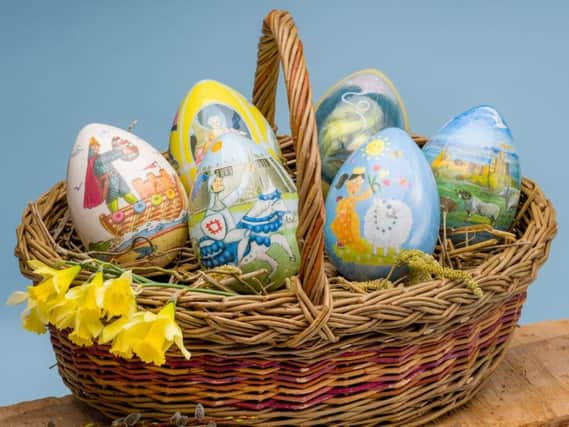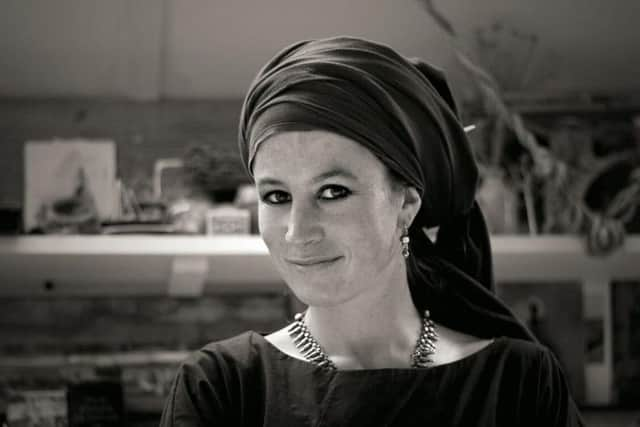English Heritage launches the ultimate Easter egg hunt


Illustrators, including J. K. Rowling illustrator Olivia Lomenech Gill, who has a studio in Belford, and Julia Donaldson’s favourite artist Lydia Monks, have teamed up with English Heritage to create eggs inspired by the charity’s 400-plus historic properties.
From knights and Norman conquerors to princesses, mythical beasts and ancient fossils, each illustrator has created a unique design telling the story of English history, myth and legend.


Advertisement
Hide AdAdvertisement
Hide AdYoung visitors to Easter Adventure Quests at English Heritage sites over the Easter weekend can search high and low for a special chicken token hidden in the undergrowth. Those who find a token will win one of the eggs placed at six random sites across the country.
Dr Michael Carter, properties historian at English Heritage, said: “For centuries, eggs have been given as gifts at Easter. This year, we’re giving this time-old tradition a new twist with the ultimate Easter egg hunt. Six eggclusive eggs designed by six brilliant illustrators and inspired by our historic castles and stately homes are the prizes awaiting those lucky enough to find the hidden chicken tokens.
"Decorated eggs have been recorded as gifts as early as 1290 when King Edward I purchased 450 to be lavishly coloured and covered in gold leaf for his courtiers, and in the early 16th century, Henry VIII received a silver-mounted egg as an Easter gift from the pope in Rome. Our lucky winners will be in good company!”
The illustrators are:


Olivia Lomenech Gill, Northumberland-based illustrator of J. K. Rowling’s Fantastic Beasts and Where to Find Them, who took inspiration from the architecture of Warkworth Castle and created her own array of amazing beasts lounging in the castle grounds, including a lion and a unicorn
Advertisement
Hide AdAdvertisement
Hide AdIan Beck, a seasoned illustrator whose credits include Philip Pullman’s Aladdin and the Enchanted Lamp and the Just So Stories. He was inspired by Battle Abbey and the Bayeux Tapestry, which recorded the famous 1066 Battle of Hastings. Beck’s design turns the conflict on its head with his warriors exchanging gifts
Polly Dunbar, creator of Tilly and Friends, a book series and programme on CBeebies. She featured Kent’s Walmer Castle in her design, with the castle playing host to a brave knight and young maiden holding a clover, representing the castle’s shape from above.
Trisha Krauss, an author and illustrator of books by Lauren Child. She created a Fabergé-inspired egg, The Victoria Egg, highlighting several beauty spots within English Heritage properties including Wrest Park in Bedfordshire, Brodsworth Hall in South Yorkshire and Witley Court in Worcestershire
Lydia Monks, best-selling illustrator and collaborator of The Gruffalo’s Julia Donaldson. She thought about visitors like herself who might visit a castle and imagine what it was like to be a knight or a great lady, and even managed to sneak in her trademark ladybird
Advertisement
Hide AdAdvertisement
Hide AdGrahame Baker Smith, iconic illustrator and author of the illustrated story, FArTHER, visited the Home of Charles Darwin, Down House in Kent. Incorporating Darwin’s theories of evolution, Grahame chose the first complete fossil of an Archaeopteryx discovered in 1861 as his inspiration. Darwin considered this discovery to be one of the most important fossil finds ever made, showing an important transition between feathered dinosaurs and modern birds.
The Easter Adventure Quest, from Friday, March 30 March to Monday, April 2, will be hosted at more than 20 sites around the country, including Belsay Hall, Castle and Gardens; Tynemouth Priory; Chesters Roman Fort; Birdoswald Roman Fort in Cumbria; Whitby Abbey and Scarborough Castle in North Yorkshire; Brodsworth Hall in South Yorkshire; Eltham Palace and Gardens in London; Audley End House and Gardens in Essex; and Kenilworth Castle and Elizabethan Garden in Warwickshire.
Often interpreted as a symbol of rebirth and new life, various traditions and superstitions have sprung up around the egg at Easter.
Eggs laid on Good Friday were said to turn into diamonds if they were kept for 100 years. Some thought that eggs cooked on Good Friday and eaten on Easter would promote fertility and prevent sudden death, and it became the custom to have eggs blessed before you ate them. It was also believed that if your egg had two yolks, you’d soon become rich.
The chocolate egg, which we are so familiar with nowadays, was not actually mass produced until the mid-20th century and so is a relatively new phenomenon.